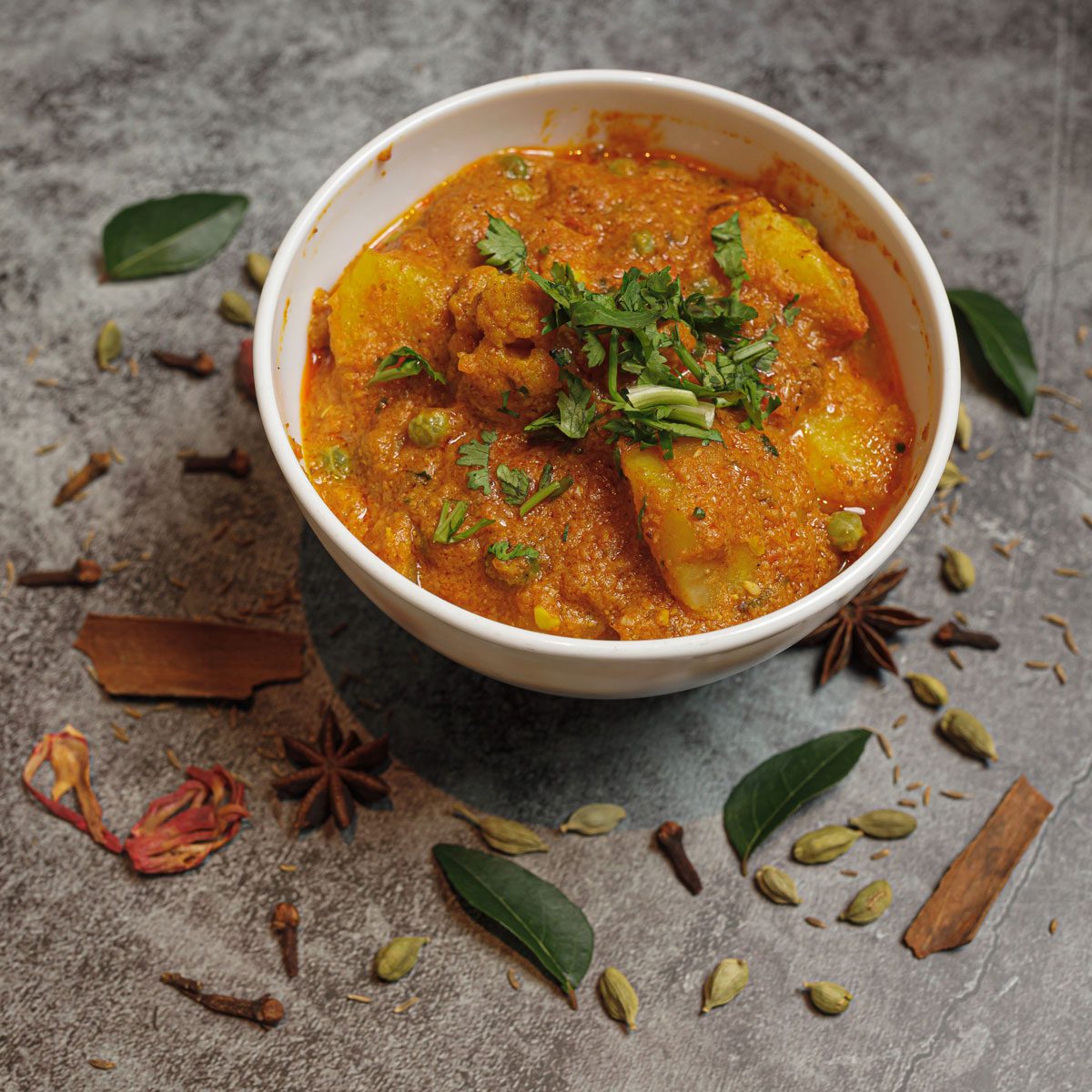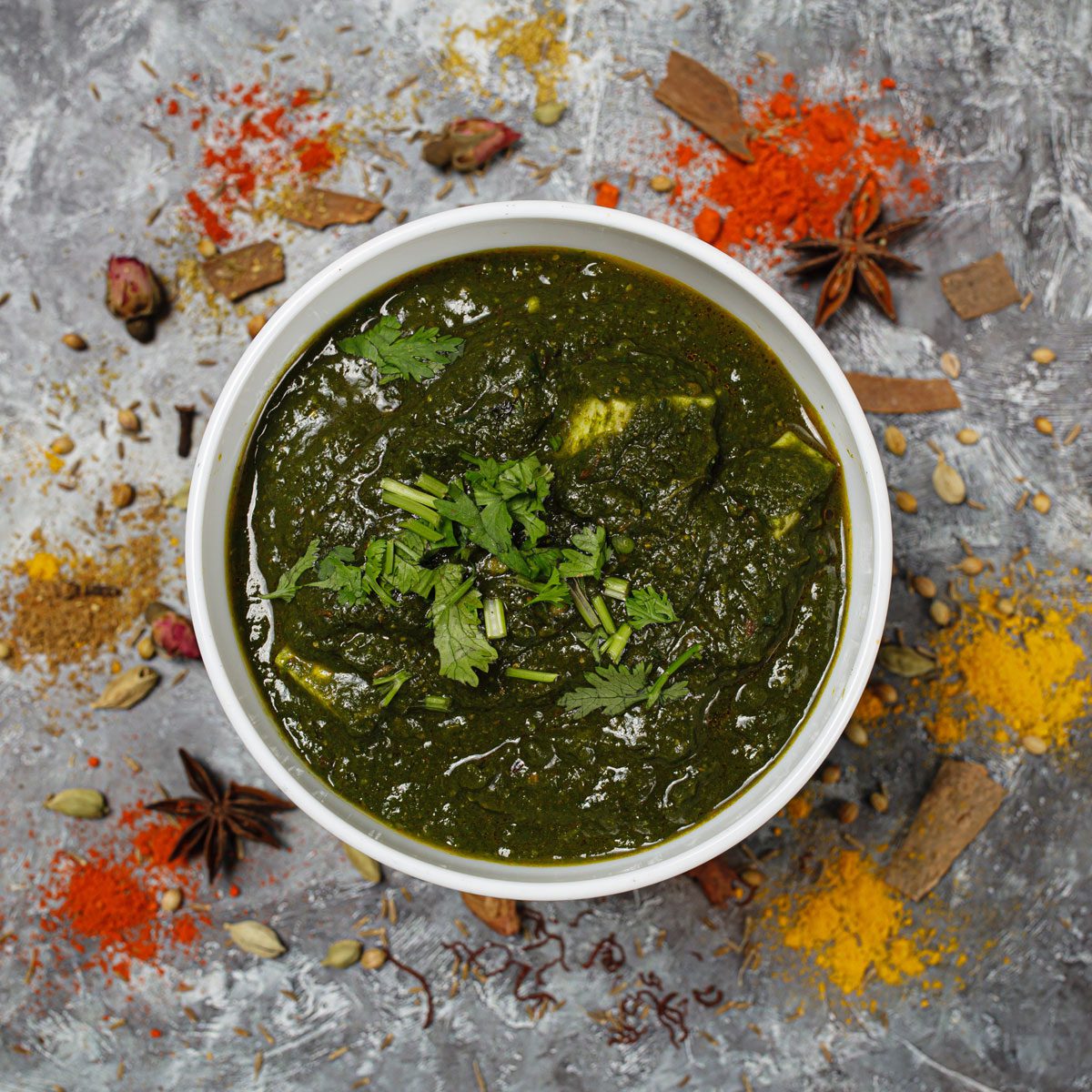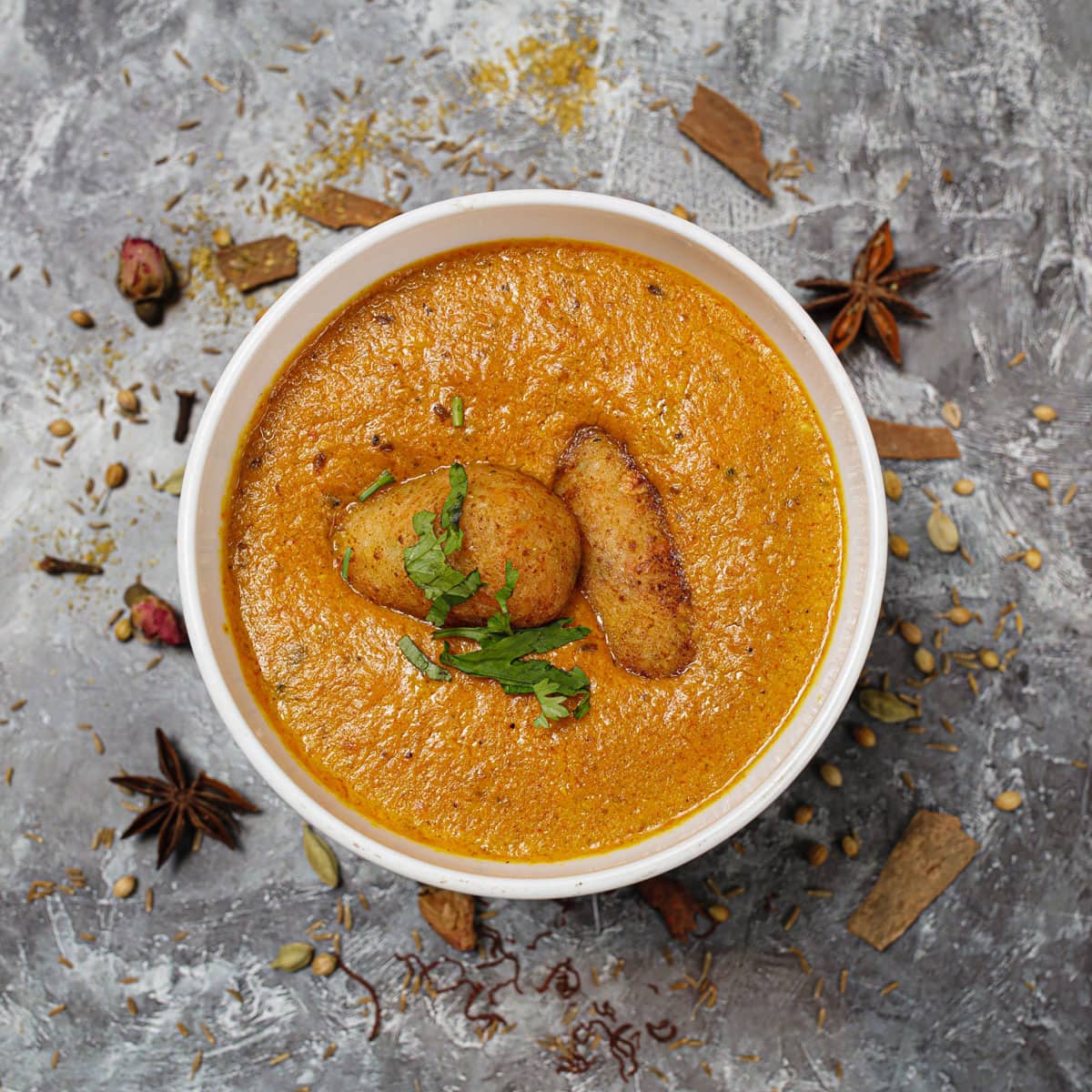Indian food is the epitome of marrying flavour with spice, and the abundance of spice combinations in South Asian cuisine will blow you away. Luckily, it is not difficult to find authentic and delicious Indian food in Saigon, and Tandoor’s superb Indian restaurant offers exactly that.
When considering the mouth-watering menu at Tandoor Saigon, it was difficult to resist including its most celebrated offering, the wonderful Chicken Butter Masala. Don’t miss that essential dish, but here are five more must-try Indian dishes at Tandoor Saigon, which are beautiful in their own individual ways because of the distinct spices and ingredients used.

A lamb stew held in high regard, Rogan Josh is of Kashmiri origin. The bright red colour and fragrant spiciness of Rogan Josh is a result of the addition of Kashmiri chilli peppers. Unlike many South-east Asian chillies, Kashmiri chilli is cultivated to provide milder heat compared to typical cayenne peppers used in much of South Asian cuisine. This means the subtle nuances of other spices such as bay leaves, cinnamon and cloves employed in the dish can be detected clearly in a well-prepared serving of Rogan Josh.
Don’t miss Tandoor Saigon’s excellent version of this Indian classic in central Ho Chi Minh City; the regulars adore it.

We’re sure you’re familiar with this North Indian classic, but what makes Tandoori Chicken so universally beloved?
The secret lies in marinating chicken in yoghurt and a special tandoori masala spice mix that is used specifically for many poultry-based dishes in India. Unlike typical garam masala, onion and ginger powder is added here for a burst of fragrance and sweetness. The equation is complete with grilling at high heat - the temperature of Tandoor-style clay ovens can often approach 500 degrees celsius, assuring that your favourite chicken skewers stay juicy and tender on the inside, yet perfectly cooked and deliciously charred on the outside. Tandoor Saigon’s Tandoori Chicken is not to be missed.

In much of Indian cuisine, spices and other main ingredients intermingle to transcend boundaries and create outstanding taste sensations. Flavourings may also play the part of core ingredients due to their unique profiles. Such is the case with Medhu Vada, a traditional donut-shaped fritter native to South Indian and Tamil cuisine. These irresistible deep fried treats are made with flour processed from Urad Dal, or black lentil, a legume that has been named a superfood due to its high content of protein, vitamin B, magnesium, zinc and potassium. Its rich, earthy flavour and resultant crumbly yet slightly chewy texture is unique to the culinary world. A fantastic offering for anyone looking for the best vegetarian and vegan Indian food in Saigon.

In fact, South Indian food in Saigon is rather uncommon, as it is in Vietnam in general, and the fact that Tandoor offers an authentic rendition of Medu Vada, as well as several other South Indian classics such as Masala Dosa and Idli, is another great reason to drop by this fantastic Indian restaurant in central Ho Chi Minh City.
The lamb samosa at Tandoor follows a traditional Indian Muslim recipe which is delicious and distinct from typical potato samosa for a good reason: green peas are included to add sweetness to minced lamb that’s flavoured with masala and chilli powder. Yet another highly-nutritious legume similar to the black lentil, its delicate flavour helps to accentuate the savoury notes of the lamb. Rich in antioxidants and proteins, green peas are not only tasty but also good for you.

Deep fried to perfection, these pockets of umami flavour are served withmintand tamarind chutney at Tandoor. Beyond lamb samosas, Tandoor is one of the best venues of muslim travellers here as they offer the widest range of Halal food in Ho Chi Minh City.
A classic rice dish that is popular amongst Indian Muslims, numerous recipes exist for Biryani but one thing holds true for most variations - long and slender basmati rice is the preferred type of grain. Authentic basmati rice is used to make biryani at Tandoor Saigon and the resultant cooked grains are fluffy and nutty. Basmati grains stay thoroughly intact when cooked, and the irresistible al-dente texture of basmati rice is a vital characteristic of biryani.

The alluring floral aroma of basmati rice originates from high concentrations of a natural-occuring compound known as 2-Acetyl-1-pyrroline. Basmati and jasmine rice contains a much more concentrated compound when compared to average white rice. This compound is also found in the pandan leaf, known as lá dứa in Vietnamese, which is used to flavour many types of asian cakes and desserts in South-East Asia.
For the science-savvy, basmati rice contains higher amounts of amylose starch, which forms longer carbohydrate chains compared to its shorter chain cousin, amylopectin (itself more abundant in short grain rice). This makes basmati rice suitable for diabetics, since sugars are released at a slower rate after digestion, meaning a lower risk of blood sugar spikes.
When looking for the best Indian food in Ho Chi Minh City, head straight to Tandoor Saigon, where guests may enjoy a delicious Biryani with lamb, chicken, shrimp or vegetables.
As early as 3,500 years ago, Hindu culture began to encourage the abstinence of eating meat. Although strict rules were not implemented, the sages encouraged the masses to consume vegetarian food for great bodily and spiritual reward. As war, famine and drought became more intense in the Indian subcontinent, beef became prohibited. Incredibly useful, load bearing animals, cows became important beasts of burden and were vital for the survival of kingdoms, cultures and farming.
At Tandoor Saigon, you will find not only some of the most delicious Indian food in Saigon, but you’ll also discover dishes that are among the best vegetarian food in Ho Chi Minh City. Additionally, most vegetable-based dishes at Tandoor Saigon are cooked without ghee or clarified butter, making Tandoor one of the best restaurants for vegan food in Saigon.
Here are some of the best vegetarian and vegan dishes at Tandoor Saigon.
Lentils, or Dal in Hindi, are a superfood. They contain exceptionally high levels of Vitamin B, folate and manganese. Vitamin B is essential to skin and intestinal health, while also helping to protect against the occurrence of stroke. To create Tarka Dal, lentils are cooked slowly over fire with turmeric, cumin, onions and other herbs until a slightly soft consistency is achieved. The natural savouriness of the dish is a great pairing with all types of rice and curries.

Just like Tarka Dal, lentils are the key ingredient in this classic that hails from the Punjab region of India. ‘Makhani’ translates to buttery in English and is also flavoured using cream, which provides a boost in richness. The recipe of Dal Makhani is somewhat more complex than Tarka Dal - apart from fresh lentils and other ingredients mentioned above, Dal Makhani also calls for tomatoes and garam masala, adding great complexity of flavour. A very versatile dish, Dal Makhani can be enjoyed alone, as an accompaniment to other mains, or simply with a serving of steaming rice.

Another classic dish popular in almost every country in South Asia, Aloo Gobi Matar is made up of cauliflower, potatoes and peas, cooked with turmeric powder, spices, chilli and bay leaf, to achieve a simple yet delicious vegan meal that resembles a dry vegetable curry. Cauliflower contains an important nutrient called sulforaphane, which studies have shown helps to fight aging and cancer. Even if you’re not a strict vegetarian or vegan, this is a must order dish. The perfect accompaniment to the delectable meat choices on Tandoor Saigon’s menu.

The foundations of Palak Paneer are deceptively simple - spinach and cheese. But to achieve a smooth, creamy and irresistible consistency, chefs at Tandoor Saigon take fresh spinach and saute them with onions and other spices before pureeing the mixture to a fine consistency. To finish, fresh Indian-style cottage cheese, known as Paneer, is added to the spinach-based ‘gravy’.

Diners at Tandoor Saigon may also choose to enjoy paneer in a butter masala style - essentially taking the meat out of Butter Chicken Masala and replacing it with glorious dairy. Creating quite possibly, one of the best vegetarian cheese-based dishes in all of Ho Chi Minh City.
A staple favourite among South Asians, Chapati is essentially flatbread made with wholewheat flour. The slightly chewy and elastic texture of Chapati is due primarily to the use of wheat that is high in gluten, just like how durum wheat is used to manufacture flour that gives well cooked pasta an ‘al dente’ bite. During the cooking process, a special round skillet known as a Tava is used to bake these flatbreads at a high temperature. The reason for this is that no oil is used, so insufficient and uneven heat would result in sticking and charring. Chapati is best enjoyed freshly baked and you’ll find no fresher than at Tandoor Saigon.

Kofta is somewhat ethnically neutral - a meatball dish with Persian origins that can be found throughout India, the Middle East, Central Asia, Turkey and Greece. At Tandoor Saigon, you’ll find an exquisite rendition that’s not to be missed. Chef Khan uses mashed potato, carrots, peas, beans, cottage cheese and cashew nut paste to make these irresistible vegan ‘meatballs’. They are crisp fried and served in a lightly spiced cashew nut gravy. Malai kofta is one of the most delicious vegan dishes in Ho Chi Minh City and another wonderful example of the fantastic Indian food at Tandoor Saigon.

WITHIN 10 KM
IN
SAIGON & HANOI